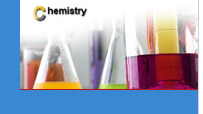最初,聚乙烯蜡是在高温高压条件下由乙烯单体聚合生成的,分子量分布通常在300-500之间,含有部分结晶和支链结构。后来,随着ZN(齐格勒催化剂)金属催化方法的改进,聚乙烯蜡有了直链结构,同时在直链上包含有支链。
齐格勒催化方法是将氯化钛和三烷基铝用以帮助生成高分子量高密度的聚乙烯和聚丙烯,这类聚合物含有较少的支链。齐格勒催化方法可以调节控制结晶度,因此可以生产包括高溶点、高硬度,脆性强的蜡和较软的,柔性较强的低熔点蜡。对于聚乙烯蜡的生产,金属催化残渣必须分解过滤掉。
聚乙烯蜡也可以通过茂金属催化方法制取。茂金属催化方法较齐格勒催化方法有很多优点。茂金属催化剂的反应更充分,催化剂用量很少,所以不必清理催化剂残留;聚合反应可以在低温下进行,成本就相对较低。另外,这种方法还能生产出更广泛的乙烯聚合物和蜡,拥有新的性能和更优化的性能。德国的科莱恩公司是唯一一家拥有茂金属催化生产技术的公司。该公司以这种技术生产的产品均以Licocene为商标进行销售,出口到北美市场上的产品都由北卡罗来纳州夏洛特市的科莱恩公司来承销。
聚乙烯蜡被用于热熔胶行业,这可能是用量最大的终端用途,通常和石蜡混合使用。热熔胶被广泛应用于包装应用,其他用聚乙烯蜡生产热熔胶的用途还包括热熔涂层,热熔路标,橡胶加工以及PVC加工润滑剂。聚乙烯蜡还被用于塑料工业中颜料和添加剂的互混媒介。
用聚乙烯蜡生产的水性乳液和分散剂被用于纺织和纸张涂层,皮革和皮鞋上光以及塑料加工的脱模剂。当用于生产地板上光蜡时,聚乙烯蜡通常是作为丙烯酸酯和苯乙烯的混合媒介的分散剂。从聚乙烯蜡氧化降解中得到的蜡也是可用的,因为这些蜡可以在表面形成抵抗膜,因为这些蜡较低分子量聚乙烯蜡有更好的硬度。乳化蜡也被用于水洗或表面上光用的纺织涂层、涂料分散、润滑以及脱模剂。柑橘类的水果涂上乳化蜡可以增加表面光亮度和保护水果。
聚乙烯蜡微粉被作为印刷油墨,涂料和涂层的添加剂,用来减少摩擦损耗,增加光亮度,防止结块。微粉蜡是万能的,有很好的多次涂刷性,允许更宽松的加工温度。聚乙烯和聚四氟乙烯微粉的汇合物有高熔点高硬度的特性。
目前在美国有5家聚乙烯蜡供应商,包括Allied Chemical(现在的honeywell),Westlake Chemical, Baker Petrolite, Chusei Wax Tech, Marcus Oil and Chemical。Allied、Westlake 和Baker Petrolite这三家公司是专门用乙烯单体生产聚乙烯蜡的,Westlake公司的聚乙烯蜡业务是于2006年从伊士曼公司收购过来的。Chusei Wax Tech和Marcus Oil公司是通过HDPE树脂里脱催化剂来制取聚乙烯蜡的。Marcus Oil公司从他们印度的工厂里进口大量的聚乙烯蜡。
据估计,2008年美国聚乙烯蜡的市场有3亿至3.5亿磅,相信2/3的聚乙烯蜡都是乙烯单体合成的,其余的是高密度聚乙烯树脂脱催化剂获得的副产品。在2007年初原油价格被抬高之前,聚乙烯树脂的价格为1美元/磅至2美元/磅。随着原油价格的升高,聚乙烯蜡的价格涨到2美元/磅至2.75美元/磅。目前原油价格回落到2007年初的水平,聚乙烯蜡的价格也应该回落到之前的水平。
Originally, polyethylene waxes were made by polymerization of ethylene monomer at high pressures and elevated temperatures. The molecular weight usually fell in the range of 300-500. They were partially crystalline and branched chains. Later, with the development of Ziegler-Natta (ZN) metallic catalysts, polyethylene waxes were made that have liner structures containing short side chains.
Ziegler-Natta catalysts are based on titanium chloride and trialkyl aluminums are used primarily to make high molecular weight, high density polyethylene and polypropylene with few side chains. Z-N catalysts allow adjustment of crystallinity so that waxes produced range from high melting, hard and brittle materials, to softer, flexible products with low melting points. For polyethylene wax, the metallic catalysts residues must be decomposed and removed by filtration.
Polyethylene waxes can also be prepared with the use of metallocene catalysts. Metallocene catalysts have a number of over titanium based Z-N catalysts. They are more active and can be used in lower loadings of catalyst so that removal of catalyst is unnecessary. Polymerization also occurs at lower temperatures, leading to lower costs. In addition, a wide variety of polyethylene polymer and waxes can be produced, allowing for an optimization of properties including products with completely new property profiles. Clariant GmbH of Germany is the only known producer of polyethylene waxes using metallocene catalysts. These products are sold under the Licocene trademark. The company exports these materials to the U.S. for sale by Clariant Corp. based in Charlotte, NC.
Polyethylene waxes are used in hot melt adhesives, probably the largest end use, usually in blends with hydrocarbon waxes. Hot melt adhesives are used most extensively in packaging applications. Other hot melt products using polyethylene waxes are hot melt coatings, hot melt road coatings, rubber processing, and in PVC processing lubricants. Polyethylene waxes are also used for additive and masterbatches as carriers and binders in additive and color concentrates for plastics.
Aqueous emulsions and dispersions made from polyethylene waxes are used in textile and paper coatings, leather and shoe polishes and in release agents in plastic processing. They are used in floor polishes usually in combination with acrylate and styrene based polymer dispersions. Waxes derived from oxidation degradation of polyethylene waxes are used because they form wear resistant films since they have greater hardness than low MW oxidates. Emulsions are used in textile coatings for wash and wear finishes, in paint dispersions and lubricants and release agents. Citrus fruits are coated with emulsions to yield a glossy surface and protect the fruit.
Micronized polyethylene waxes are used as additives for printing inks, paints and coatings. They are used in these applications to provide rub and mar resistance as well as gloss retention and antiblocking properties. Micronized waxes are versatile, have excellent recoatability, and allow for elevated processing temperatures. Combinations of micronized polyethylene and polytetrafluoroethylene (PTFE) are characterized by high melting points and toughness.
Currently there are five suppliers of polyethylene waxes in the U.S. These include Allied Chemical, Westlake Chemical, Baker Petrolite, Chusei Wax Tech, Marcus Oil and Chemical and Baker Petrolite. Allied, Westlake and Baker Petrolite make on-purpose polyethylene waxes starting with ethylene monomer. Westlake acquitted the polyethylene wax business from Eastman in 2006. Chusei Wax Tech and Marcus Oil make polyethylene waxes by removing the catalysts from HDPE resins. Marcus Oil & Chemical had been importing large quantities of polyethylene waxes from its plant in India.
The market for polyethylene waxes in the United Stated at between 300 and 350 million pounds in 2008. Of this two thirds is believed to be on-purpose material produced from ethylene monomer. The balance is by-product material made by removal of catalyst residues from high density polyethylene resins. Prior to the run up in crude prices starting in early 2007, prices of polyethylene resins ranged from $1.00 to $2.00 per pound. With the escalation of crude oil. Prices for polyethylene waxes were as high as $2.00 to $2.75 per pound. Now that crude oil prices have come back down to where they were in early 2007, prices for polyethylene waxes should come back down to their previous levels.
|
